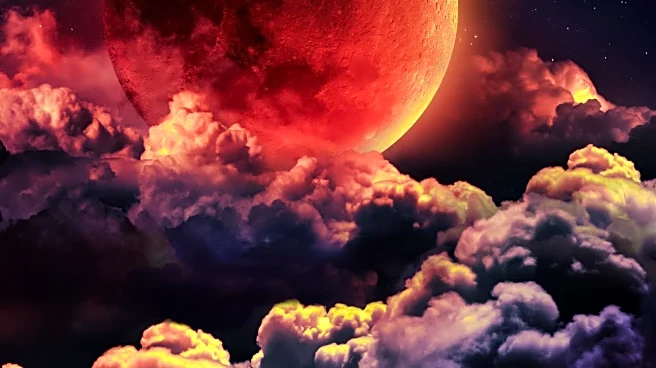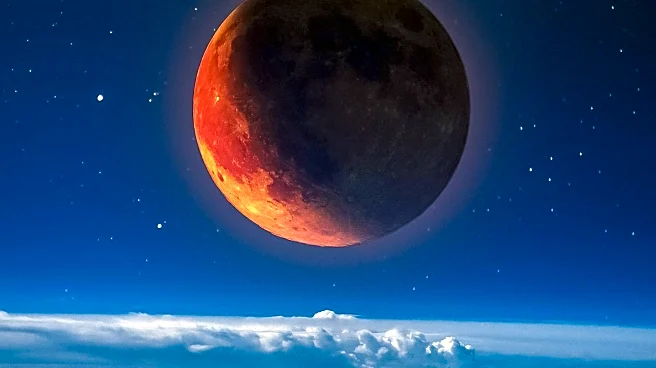What's Happening?
A total lunar eclipse, known as the Harvest Blood Moon, is set to occur on September 7, 2025. This astronomical event will be visible across much of Europe, Asia, Africa, Australia, and parts of South America. During a lunar eclipse, the Earth positions itself between the sun and the moon, causing the moon to pass through Earth's shadow. This results in the moon appearing darker and taking on a reddish hue, due to the scattering of light through Earth's atmosphere. The eclipse will be visible from the UK starting around 7:30 PM, when the moon rises above the horizon. Unlike solar eclipses, lunar eclipses can be viewed without special equipment, making it accessible for sky watchers to enjoy the spectacle.
Why It's Important?
Lunar eclipses, particularly the Harvest Blood Moon, offer a unique opportunity for astronomical observation and public engagement with science. This event highlights the intricate dynamics of celestial bodies and their orbits. For educators and enthusiasts, it serves as a practical demonstration of astronomical phenomena, fostering interest in space science. The visibility of the eclipse across multiple continents allows for widespread participation, encouraging a global appreciation for natural events. Additionally, such occurrences can inspire cultural and artistic interpretations, enriching societal perspectives on the cosmos.
What's Next?
As the date approaches, sky watchers and astronomers will prepare to observe the Harvest Blood Moon. Interactive eclipse maps will be available to help individuals determine the best viewing times and locations based on their geographical position. Public events and educational programs may be organized to enhance community engagement and provide insights into the science behind lunar eclipses. Observers are encouraged to find locations with clear views to the east to maximize their experience of the eclipse.
Beyond the Headlines
The Harvest Blood Moon carries cultural significance, often associated with folklore and traditions. Its occurrence near the autumn equinox ties it to agricultural cycles, historically marking a time for harvest celebrations. The reddish hue of the moon during the eclipse can evoke symbolic interpretations, influencing art and literature. This event also underscores the importance of preserving dark skies, free from light pollution, to ensure future generations can continue to enjoy such celestial phenomena.












